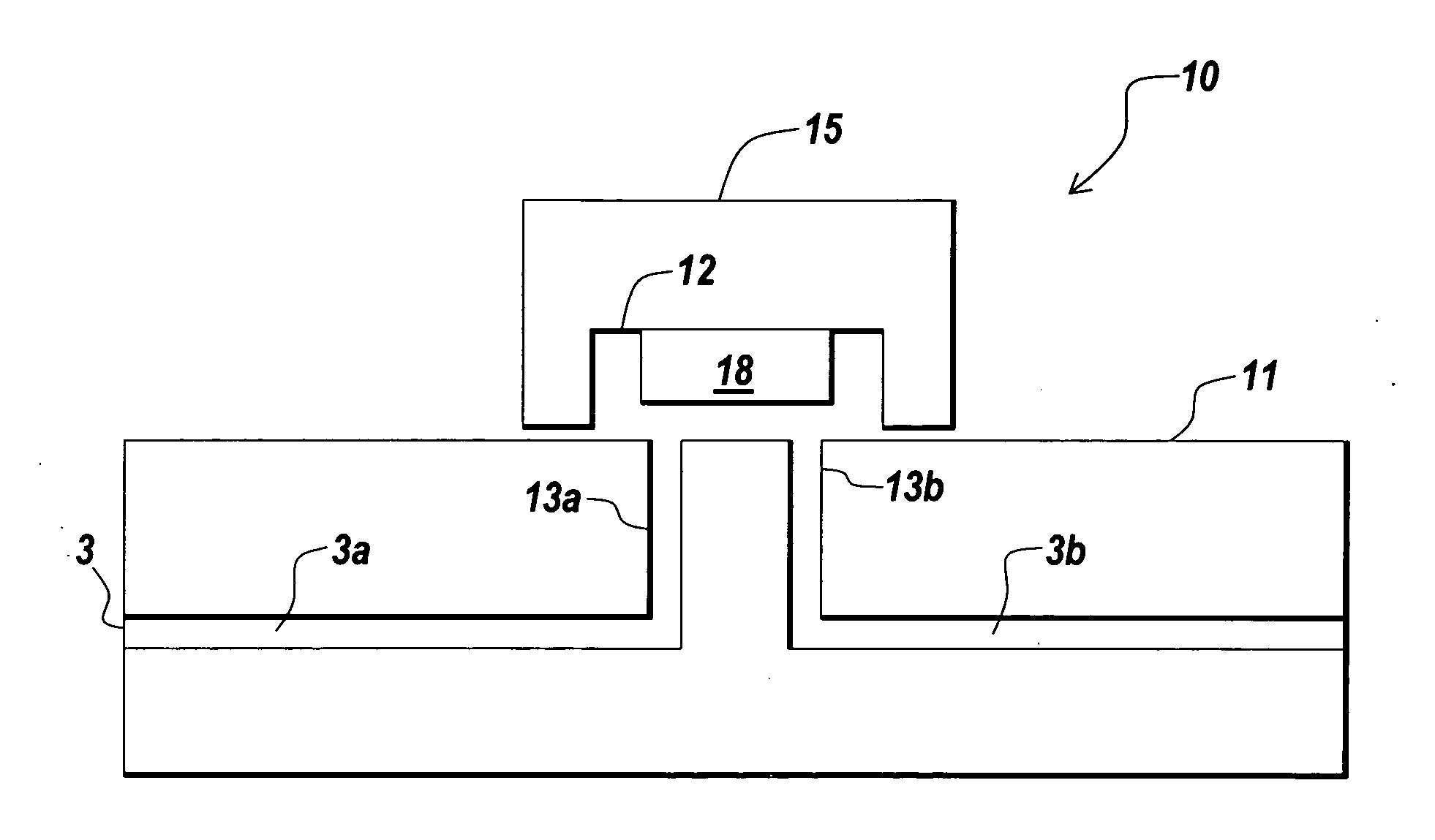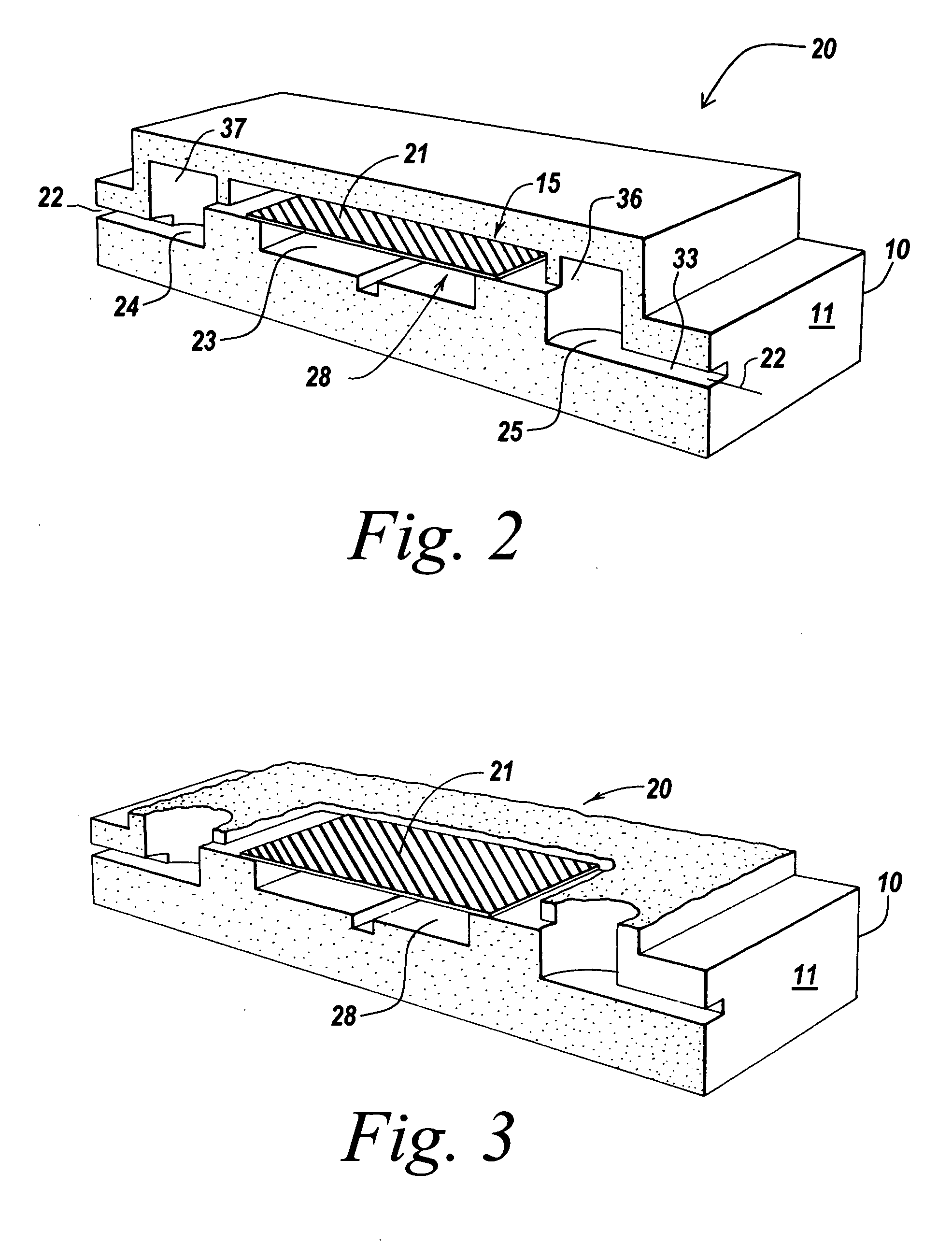Implementation of microfluidic components, including molecular fractionation devices, in a microfluidic system
a microfluidic system and microfluidic components technology, applied in the field of microfluidic systems, can solve the problems of complex sample handling requirements, large sample preparation requirements, and limited ability of current technologies to recognize alterations in functional and structural properties of proteins, and no little or no functional information is revealed
- Summary
- Abstract
- Description
- Claims
- Application Information
AI Technical Summary
Benefits of technology
Problems solved by technology
Method used
Image
Examples
example 1
[0199] A plurality microfiltration devices with fluid channels, such as one of the devices shown in FIGS. 2-7B, were assembled on a chip. The microfiltration devices had a capacity of between about 1-2 μl to demonstrate the ability to set and reset buffers and small molecule concentrations in a flow stream containing proteins.
[0200] To demonstrate the diffusion of small molecules across the filter membranes of the microfiltration devices a mixture of 0.1 mM Fluorescein sodium salt (Sigma catalog #F6377) and 0.01 mM Rhodamine labeled BSA (Sigma catalog #A2289) in a phosphate buffered saline (PBS) pH 7.2 was passed through the channel on one side of each membrane and an accumulation of small molecules was detected on the other side. Flow through from the experimental step was monitored by collecting samples in micro well plates and recording excitation and emission spectra at 485 and 518 nm for Fluorescein sodium and at 544 and 590 nm for Rhodamine labeled BSA (RBSA). These results a...
example 2
[0202] Glass chips with appropriate plumbing were designed and fabricated. To fabricate a fluidic circuit, channels in the glass chips were manufactured by chip microfabrication. The channels or plumbing were fabricated by etching channels in a glass plate followed by bonding of a second glass plate to enclose the channels, forming sealed microchannels. Vertical communication ports were laser machined in the glass to connect the channel to an exterior surface of the glass chip.
[0203] Capping modules were formed comprising plastic structures having a 3×5 mm planar cross section with a 6×0.04×1 mm channel formed in the base on the side that will be mounted towards the glass. The capping modules were prepared in arrays of 3×3 caps. Molecular fractionation devices were built by starting with a capping module array and sequentially bonding the following: a polyester bonding layer, a filter membrane layer, and another polyester bonding layer in a batch process to makes nine (a 3×3 array)...
example 2a
[0208] In a first example, the molecular fractionation device was preloaded with sample, followed by sub fraction elution using step gradient of elution buffer.
[0209] In the first example, the capping modules were prepared with matrix preloaded with sample. Protein A agarose beads were washed with ten times the volume of beads. A 1:1 ratio of antibody mixture and binding buffer was added to the prepared beads. 5 μl of this mixture was then loaded in the capping modules on the chips. As described above, there are two steps involved in the elution of sub fractions of samples. In a first step, the molecular fractionation device was washed with twenty times the volume of the capping module with a binding buffer to remove non specific binding by flowing binding buffer over the beads. In a second step, elution buffer with increasing concentration of elution buffer was used to elute sub fractions of trapped antibodies. Ten steps of concentration gradients were used with 20% increase in th...
PUM
| Property | Measurement | Unit |
|---|---|---|
| volume | aaaaa | aaaaa |
| volume capacity | aaaaa | aaaaa |
| volume capacity | aaaaa | aaaaa |
Abstract
Description
Claims
Application Information
 Login to View More
Login to View More - R&D
- Intellectual Property
- Life Sciences
- Materials
- Tech Scout
- Unparalleled Data Quality
- Higher Quality Content
- 60% Fewer Hallucinations
Browse by: Latest US Patents, China's latest patents, Technical Efficacy Thesaurus, Application Domain, Technology Topic, Popular Technical Reports.
© 2025 PatSnap. All rights reserved.Legal|Privacy policy|Modern Slavery Act Transparency Statement|Sitemap|About US| Contact US: help@patsnap.com



